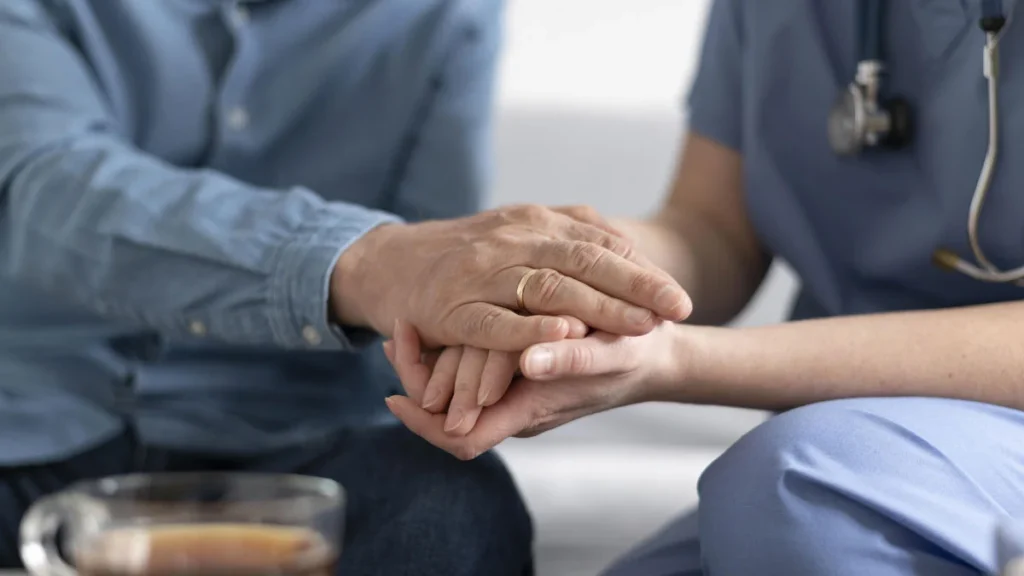
Parkinson’s Disease: Early Signs, Causes & Prevention
Parkinson’s disease isn’t exactly the trendiest health topic making the rounds on social media these days. But for the millions of people worldwide bravely battling this chronic, progressive brain disorder, it’s an all-too-real daily reality.
If you or someone you love has been impacted by a Parkinson’s diagnosis, don’t panic just yet! While it’s certainly a serious condition without a clear cure, having the right information and support can go a long way toward managing symptoms and embracing a full, enriching life. In this blog, we will tell you everything you need to know about Parkinson’s disease – the symptoms, causes, treatments, and some tips for preventing it in the first place.
Table of Contents
ToggleWhat Exactly is Parkinson's Disease?
Parkinson’s disease originates in the brain, specifically affecting the nerve cells (neurons) responsible for producing dopamine – one of the key chemical messengers facilitating smooth, coordinated body motions. As these dopamine-producing neurons become impaired or die, body movements become increasingly difficult to control.
Abnormal clumps of the protein alpha-synuclein are also believed to contribute to killing off these all-important neurons over time. But frustratingly, the precise physiological chain reaction that kick starts this dopamine deficit and subsequent motor symptoms is still unclear. Genetic and environmental factors like toxin exposure likely play a role.
Though the average onset occurs around age 60, Parkinson’s can rear its head anytime from the 30s to later senior years. It progresses gradually for most, though the specific symptoms and pace of progression look vastly different from one individual to the next.
Motor Symptoms to Watch For
Since Parkinson’s is a movement disorder triggered by dopamine depletion in the brain’s motor system, some of the most common early symptoms involve unintentional or uncontrollable movements:
- Tremors/shaking affecting the hands, arms, legs or face
- Slowed movement and difficulty initiating movement
- Stiff, rigid muscles and limbs
- Impaired balance, coordination, and frequent falls
- Shuffling gait or dragging feet when walking
In addition to these movement-related issues, many with Parkinson’s also experience:
- Worsening handwriting that becomes small and cramped
- Lack of facial expressions (masking)
- Speech changes like speaking softer or more rapidly
- Dizziness and fainting
As the disease progresses into later stages, non-motor symptoms like cognitive impairments, depression, sleep disturbances, swallowing issues and more may manifest. If you are experiencing any of the above symptoms, schedule an appointment with Dr. Rahul Mahajan, who is one of the best Neurologist in Chandigarh.

What Causes It?
Unfortunately, science hasn’t quite nailed down one specific cause for why some people develop Parkinson’s and others don’t. Like most neurological diseases, it seems to arise from a complicated mix of genetic and environmental factors.
On the genetic front, researchers have identified certain gene mutations that appear to increase Parkinson’s risk, like those impacting the LRRK2, PARK7, PINK1, and PRKN genes. Interestingly, we all carry some of these genetic variations – but only a small percentage develop Parkinson’s as a result.
This is where environmental exposures come into play as potential “triggers” interacting with those genetic predispositions. Some of the main risk factors under investigation include:
- Head trauma or injury
- Exposure to toxins like pesticides, herbicides, or solvents
- Air pollution and other environmental factors
- Gut health and microbiome disruptions
Can You Reduce Your Parkinson's Risk?
While there’s no guaranteed prevention method, research has shown that adopting an overall healthy lifestyle may help reduce Parkinson’s risk factors and potentially slow disease progression in some cases.
Experts recommend focusing on habits like:
- Eating a nutrient-rich diet loaded with antioxidants and anti-inflammatory foods
- Exercising regularly to promote better dopamine regulation
- Practicing mindfulness, meditation, yoga to reduce oxidative stress
- Avoiding head injuries by wearing helmets for high-risk activities
- Minimizing exposure to pesticides, solvents, and environmental toxins
- Maintaining an active social life and mentally stimulating hobbies
While these adjustments are no silver bullet, they can support brain health, protect neurons, promote dopamine function, and give your body’s natural defenses a stronger fighting chance.
Conclusion
So to anyone newly diagnosed or struggling with Parkinson’s progression, please hear this: You don’t have to concede to a fading quality of life ruled by your symptoms. Prioritize accessing specialized care at a center like Hale Clinics, surround yourself with your own supportive care squad, and prepare to keep boldly living life to the fullest despite Parkinson’s attempts to limit you.
With equal parts empathy and unwavering expertise, the Hale Clinics family is here to help you find the hope, resources, and resilience to persist and thrive far into your Parkinson’s journey. The path will be arduous, but you don’t have to walk it alone anymore. Help and healing are waiting.
FAQs
1. What is Parkinson’s disease?
Ans. Parkinson’s disease is a chronic, progressive brain disorder that affects nerve cells (neurons) responsible for producing dopamine, a key chemical messenger that facilitates smooth and coordinated body motions.
2. What are the common early symptoms of Parkinson’s disease?
Ans. Common early symptoms of Parkinson’s disease include tremors or shaking, slowed movement, stiff and rigid muscles, impaired balance and coordination, shuffling gait, worsening handwriting, lack of facial expressions, and speech changes.
3. What causes Parkinson’s disease?
Ans: The exact cause of Parkinson’s disease is unknown, but it is believed to arise from a combination of genetic and environmental factors, such as gene mutations, head trauma, exposure to toxins, air pollution, and gut health disruptions.
4. Can Parkinson’s disease be prevented?
Ans. While there is no guaranteed prevention method, adopting a healthy lifestyle may help reduce risk factors and potentially slow disease progression.
5. At what age does Parkinson’s disease typically occur?
Ans. The average onset of Parkinson’s disease occurs around age 60, but it can develop anytime from the 30s to later senior years.
